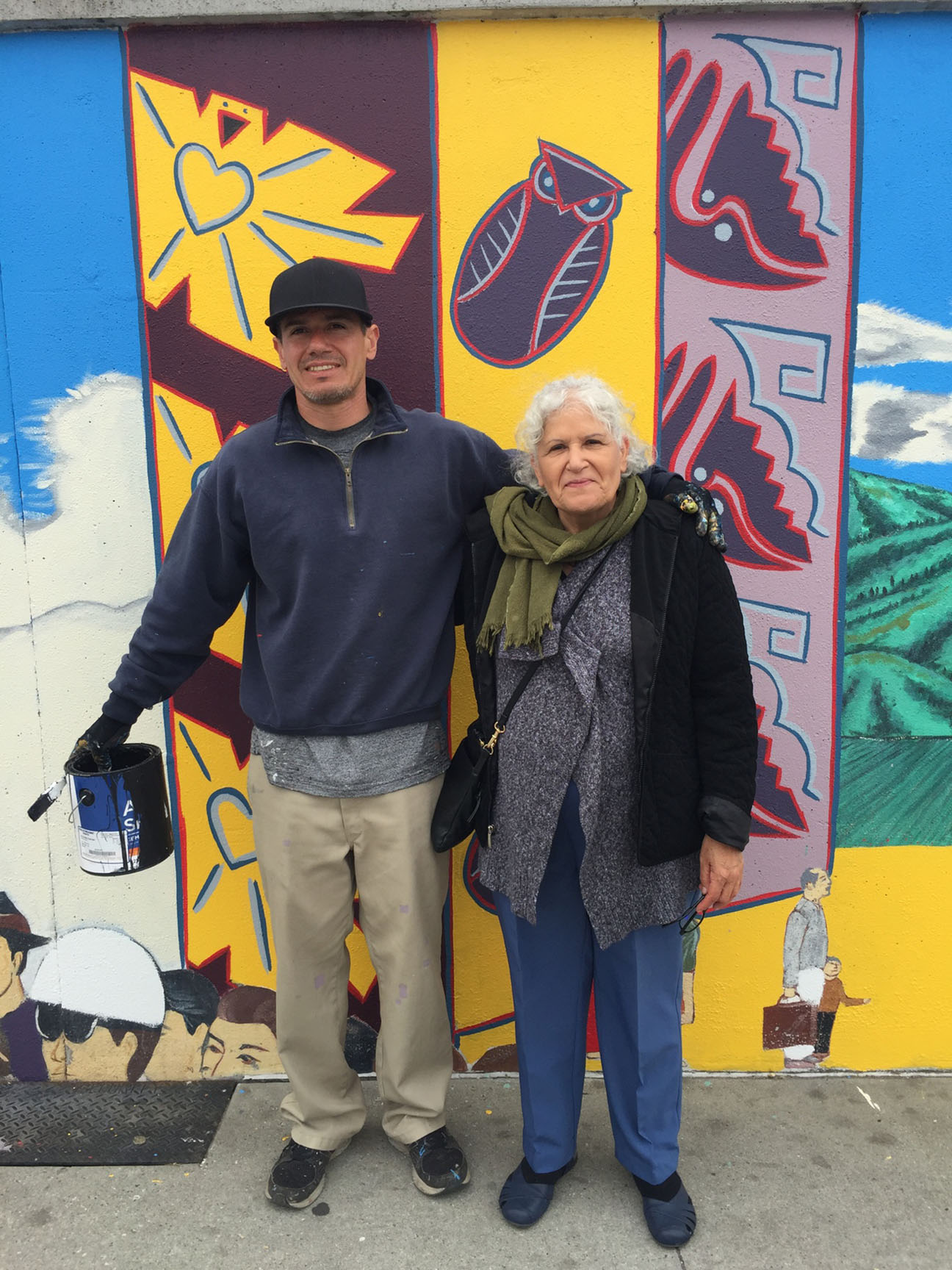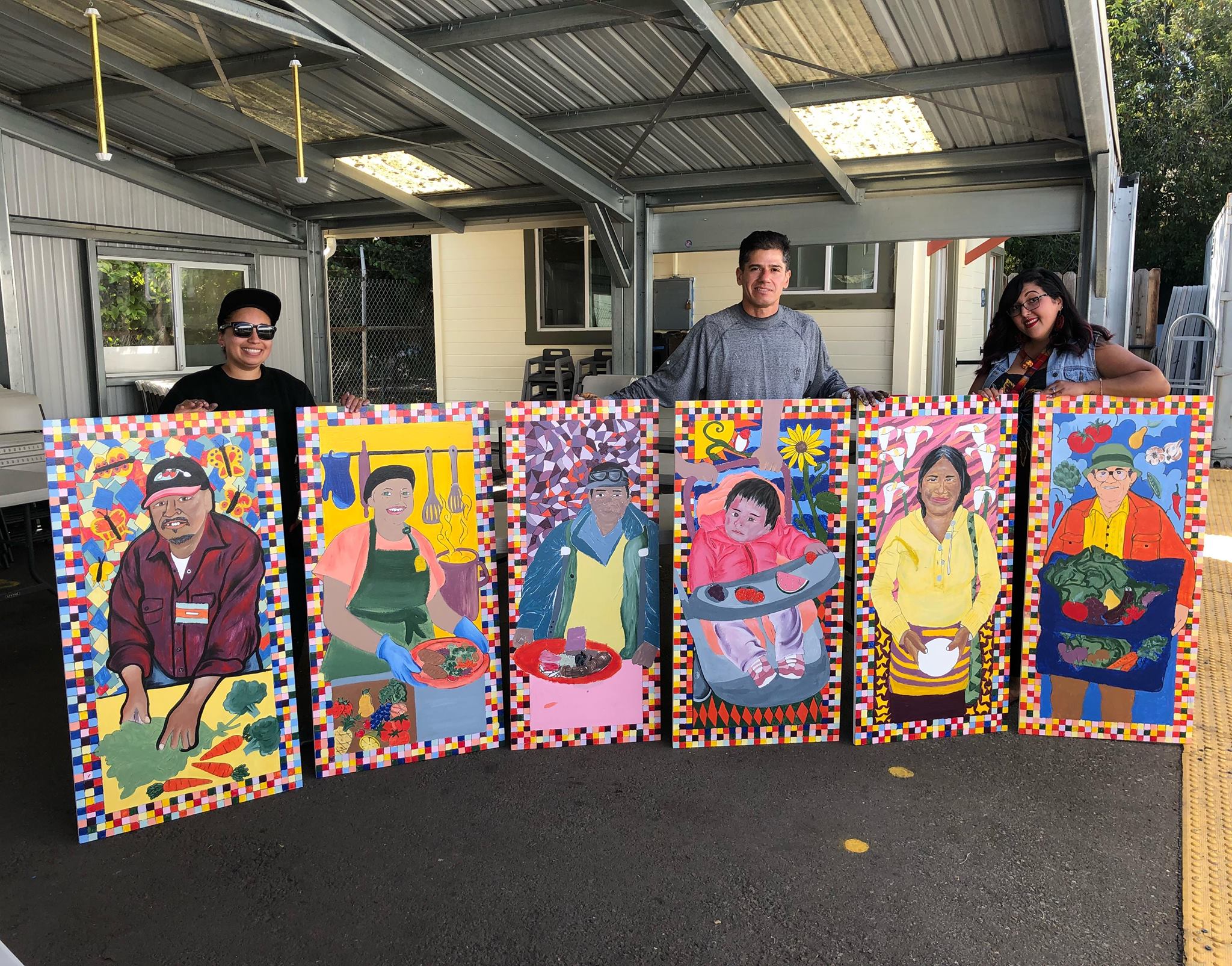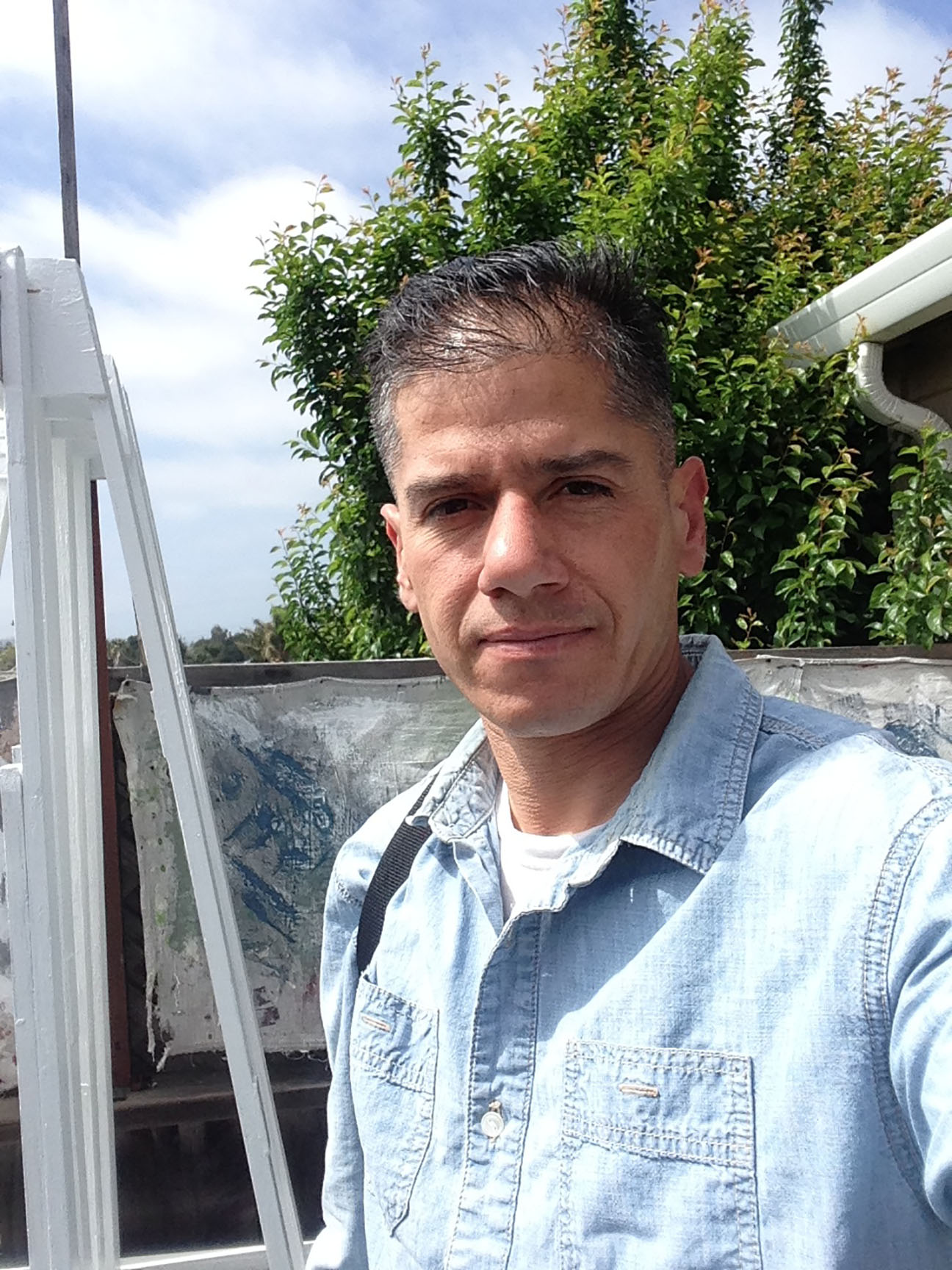| FEATURED
By Olga Rosales Salinas
Artist and muralist Jaime Sánchez was born and raised in Watsonville. His parents Gomercindo and Esperanza Sanchez are from Manalisco and Mezcala, respectively, in Jalisco, Mexico. He served as a sergeant in the United States Marine Corps and received an undergraduate degree in visual and public art from CSU-Monterey Bay. With an art practice of 22 years, his work can be seen in several murals in the Pajaro Valley region and online @jaimesanchezpresents.
Enlarge

Q: First, thank you so much for spending time with us today. Your story is powerful, not just for Watsonville natives, but for all immigrant or first-generation students growing up on the Central Coast. Facing much of the same struggles that all first-generation students face, you were able to live into your art of becoming a muralist, presenting your work in some of the most prominent areas of Watsonville. You recently received a CARES Act grant award from the Community Health Trust of Pajaro Valley for raising awareness on COVID prevention. We are fortunate to have you here with us today.
On your website, Animo Arte, you describe the creative process as one of exploration into the ultimate ask – Process for what? Can you tell us about the deep dive you take in answering that question when you approach a canvas?
A: I define art as the process of establishing justice. Justice is universally accepted as an idea aligned with truth and correctness, and in my opinion, it is the highest ideal. So when I paint and draw pictures and product designs, it is with the belief that those pictures and plans will become art by helping establish justice. In a way, there is substantial “leap-of-faith” involved because there’s no way to tell if it’s genuine art unless/until justice is achieved.
Q: You are very involved in the Watsonville community as your hometown and as a place that you hope to thrive. What are the most significant changes you see in the community, both positive or negative?
A: When it comes to Watsonville, I’ll say that sometimes, some people make mistakes and have to pay big, but for the most part, the majority of the people here are ultra-compliant with the status quo. Still, there is a lot of potential for a growing population of independent thinkers due to the young population’s courage, introspection and self-leadership.
Enlarge

Q: Can you tell us about the large-scale mural work you’ve done in Watsonville? How has that work specifically shaped other aspects of your creative process?
A: The largest mural I’ve painted is the PV High Mural. It was quite an experience. Early on, while painting the first panel, from a distance, a student there yelled, “Finally, something I can be proud of!” Weeks later, on another panel, a soda machine was blocking part of the wall to fill in, and the football players who were practicing nearby saw that and came over to move the machine out of the way.
I was fatigued into the months of the process, and a teacher there said, “When is it going to be done? I want to see it done. Perhaps you bit off more than you could chew.” Although he was hating, I made him eat his own words by completing the mural.
Months later, I visited the mural and saw it was tagged (graffiti) with the phrase “420 lifestyles.”
Still, the exciting thing was the way they did it — as it starts big and leveled, the tag begins to get smaller and tilt lower to avoid and go underneath the area with a lot of detail. So the repair was quick. They made a conscious choice not to damage the complex site.
All this to say that I learn more from the mural work than anything else. People have a way of interacting with the art in which I learn something new. I’m sure I’ll never stop learning.
Q: In 2018, you worked at Aptos High in the credit recovery program. Can you describe that experience? Have you been back since?
A: Each summer, students who failed classes that spring have a chance to make up those credits in the credit recovery program. Each year, one high school campus hosts this program for all students, grades 9-12, from all the high schools in the district.
I was the teacher for two courses, and it is a good memory for me. I have a lot of empathy for these students. When I was in high school, I was experiencing similar hardships that some of these students were possibly experiencing. The majority of the students in the program were of Mexican-American descent.
Enlarge

Q: My sister Elizabeth described her experience at Aptos High from the vantage point of being one of the first kids being bussed in from Watsonville. She remembers the school as being completely homogenous. Do you agree? Is that word still accurate?
A: I can’t say because it was a summer scenario with students from all the high schools. However, I did substitute there several times during regular school sessions, and in my opinion, it’s gotten worse because it does indeed look the same, and it shouldn’t.
Q: Who were the angels who helped you get to CSU-Monterey Bay from Aptos High School? What were some of the hurdles you faced getting to college from Aptos?
A: After high school, I served in the Marine Corps for four years, then tried to get a B.A. in Chicano studies at San Diego State University, but I was making too much art and taking too many art classes, so I relocated to the Pajaro Valley and transferred to CSUMB, where I achieved my undergraduate degree in visual and public art with an emphasis in mural and large scale painting. I don’t know for sure, but most likely, my parents’ prayers most contributed to getting me through. I realized later in life, even though it was in plain view, that my parents always pray for me.
Q: Can we talk about Prop 187? I remember quite a few of us joining the walk-out of campus in 1995, a protest against Pete Wilson’s Prop. 187. Do you feel that that experience had a profound impact on you? Do you think that it impacted your remaining time at Aptos?
A: For sure, without a doubt. We, the Mexican-American people, were being singled out and targeted by the state. I remember the faces of the white students, teachers, and staff as I walked out with the demonstration; it was a look of amusement, disapproval, and contempt all wrapped up into a daring smirk. The main thing I learned was that I was not one of them (white people). That’s what that experience enforced. It was an empowering experience, that’s for sure. I’m not confused about racism.
Q: What would you say if you were to address the first-generation or immigrant students at Aptos High now?
A: Read “The United Independent Compensatory Concept” by Mr. Neely Fuller Jr. Buy the book directly from the author at producejustice.com. You can also find the book on Amazon. Never stop learning.
Enlarge

Please visit @jaimesanchezpresents for more about the artist.
Have something to say about this story? Send us a letter.
